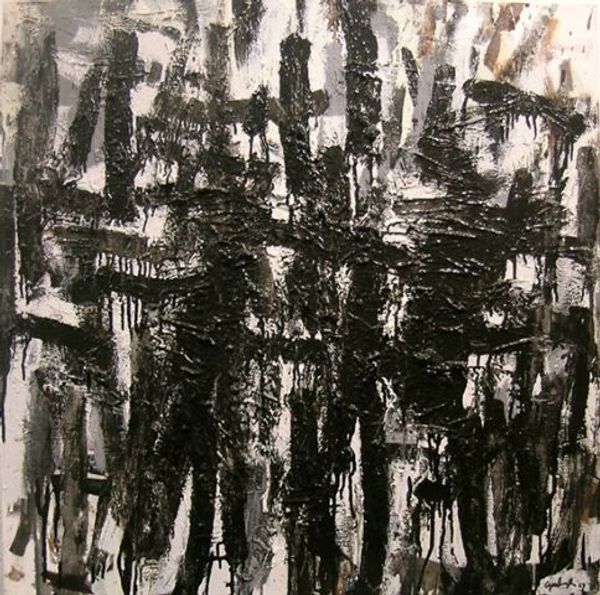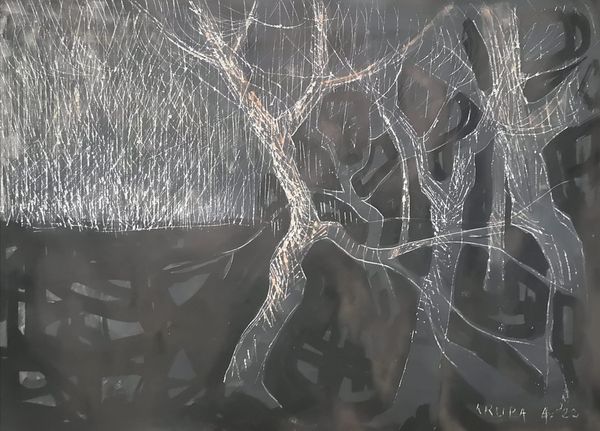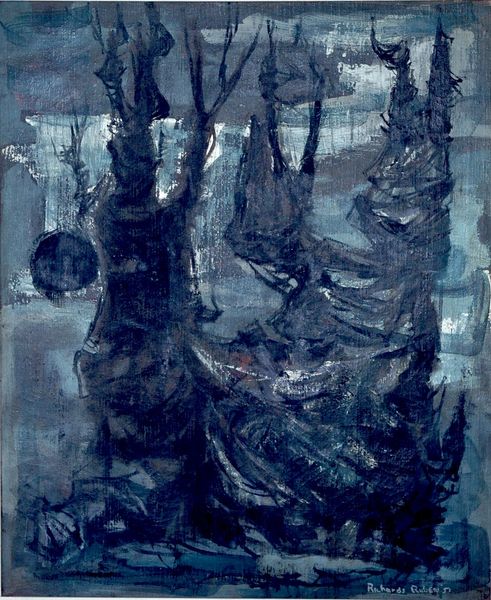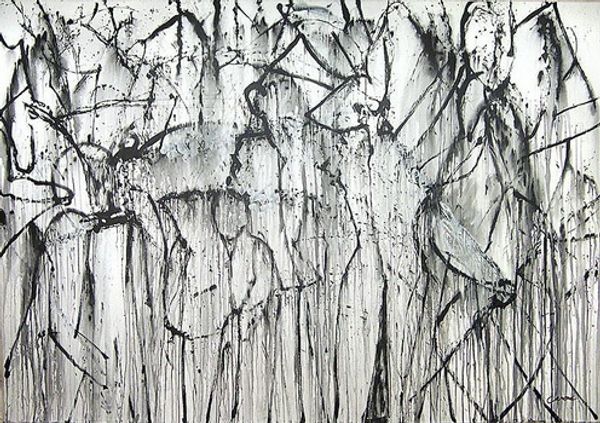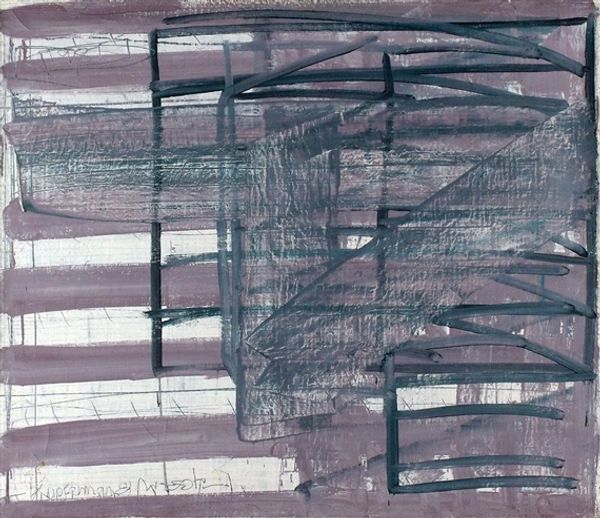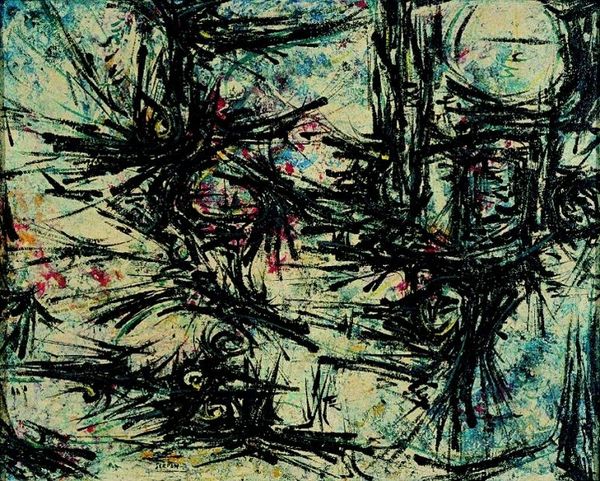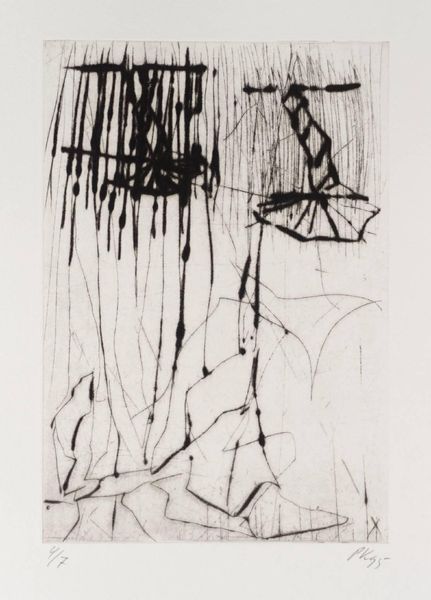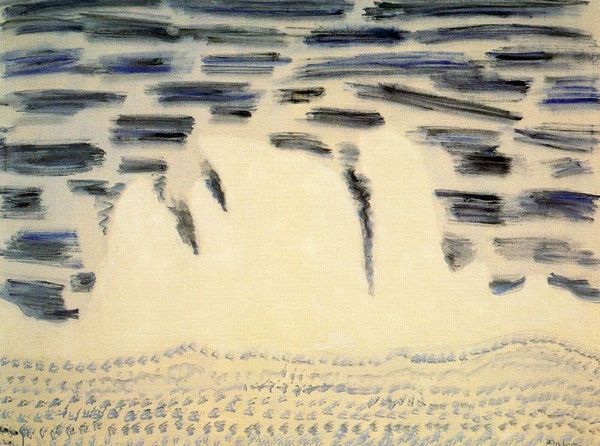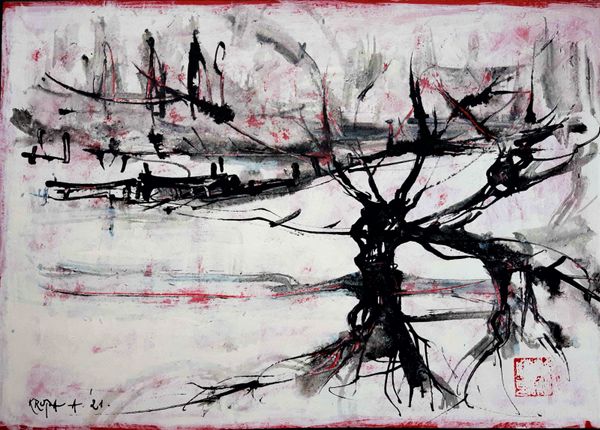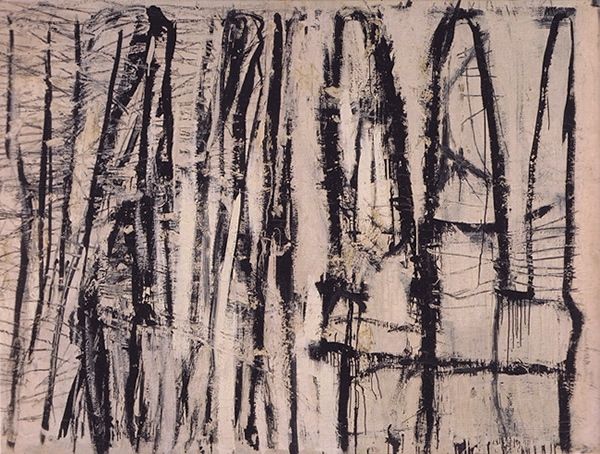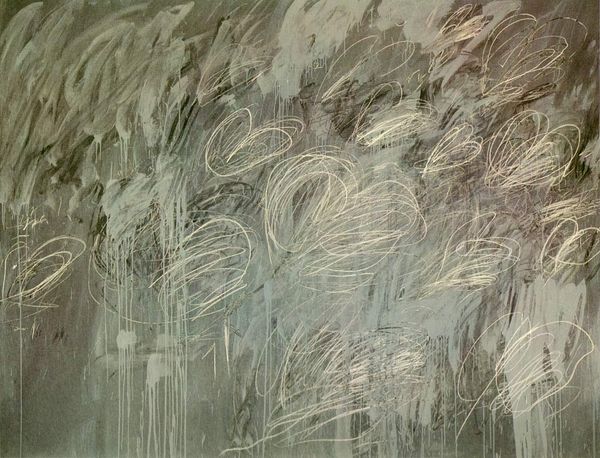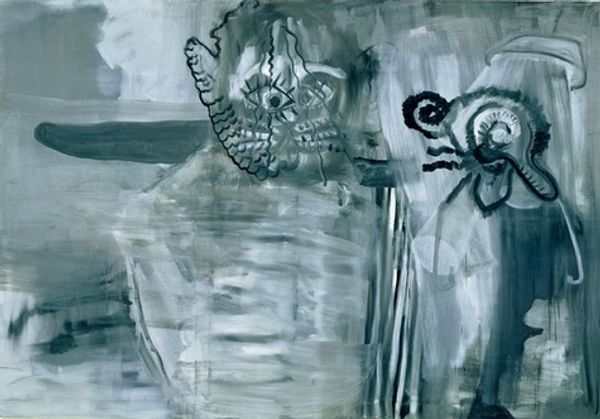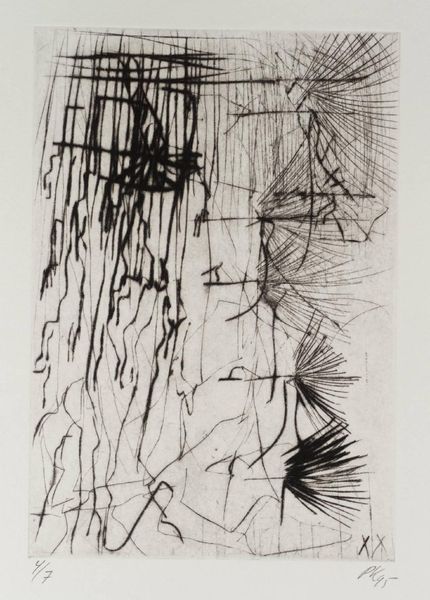
painting, oil-paint
#
abstract painting
#
painting
#
oil-paint
#
landscape
#
expressionism
#
abstraction
#
abstract art
#
modernism
Dimensions: 79.7 x 109.1 cm
Copyright: Public domain
Editor: This is Piet Mondrian's "The Gray Tree," painted in 1911. It's an oil painting, and it's interesting how he's used a very limited palette to depict what I assume is a tree. I'm really curious to know more about it. What do you see in this piece? Art Historian: Well, at first glance, the limited palette you mentioned immediately brings to mind the socio-political constraints many artists faced, specifically, those marginalized, without access to expensive pigments and materials. But in Mondrian’s case, the conscious choice to reduce his palette reflects the period's move away from representational art towards abstraction. Think about the historical context – early 20th century Europe. There's rapid industrialization, shifts in social structures. How might that impact the way an artist sees and portrays the world? Editor: So, the lack of color isn't necessarily a constraint but a deliberate choice? How does that connect to the "tree" itself? Art Historian: Exactly! Now, look at how the tree's form is deconstructed. It's not a photorealistic representation. The branches are almost skeletal, reaching out. The gray tones add a sense of melancholy, almost as if nature itself is struggling against the encroaching modern world. Considering his later purely abstract work, can we read this tree as Mondrian trying to dismantle traditional ways of seeing? A visual critique, perhaps? Editor: That's a powerful interpretation! I always thought of it as just a step towards abstraction, but your points about social upheaval and a critique of traditional representation give it so much more depth. Art Historian: It is a good example of what Mondrian called a progressive "purification". Considering that a tree can represent shelter and connection to one's roots, the loss of it mirrors the cultural consequences brought forth with Modernity. But don't simply take my word for it. Keep digging, ask questions, and develop your own informed perspective! Editor: I will! Thank you; that’s given me a lot to think about. Art Historian: And me as well, reflecting together on historical art with its possible intersectional meaning is essential.
Comments
No comments
Be the first to comment and join the conversation on the ultimate creative platform.
